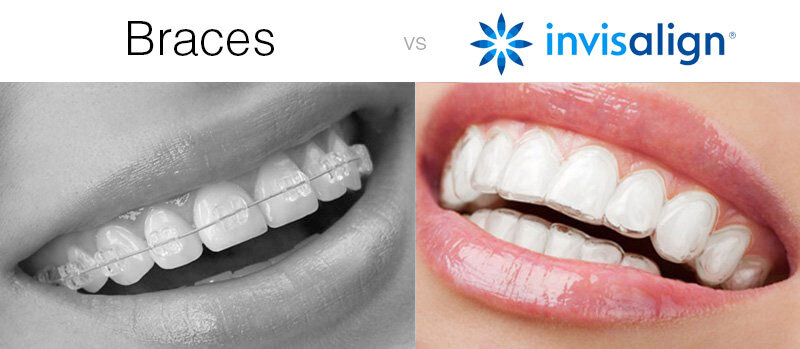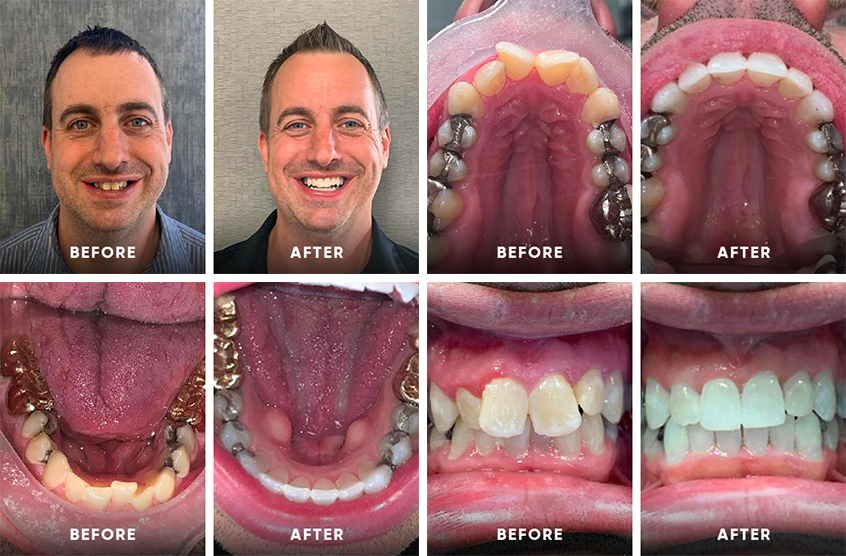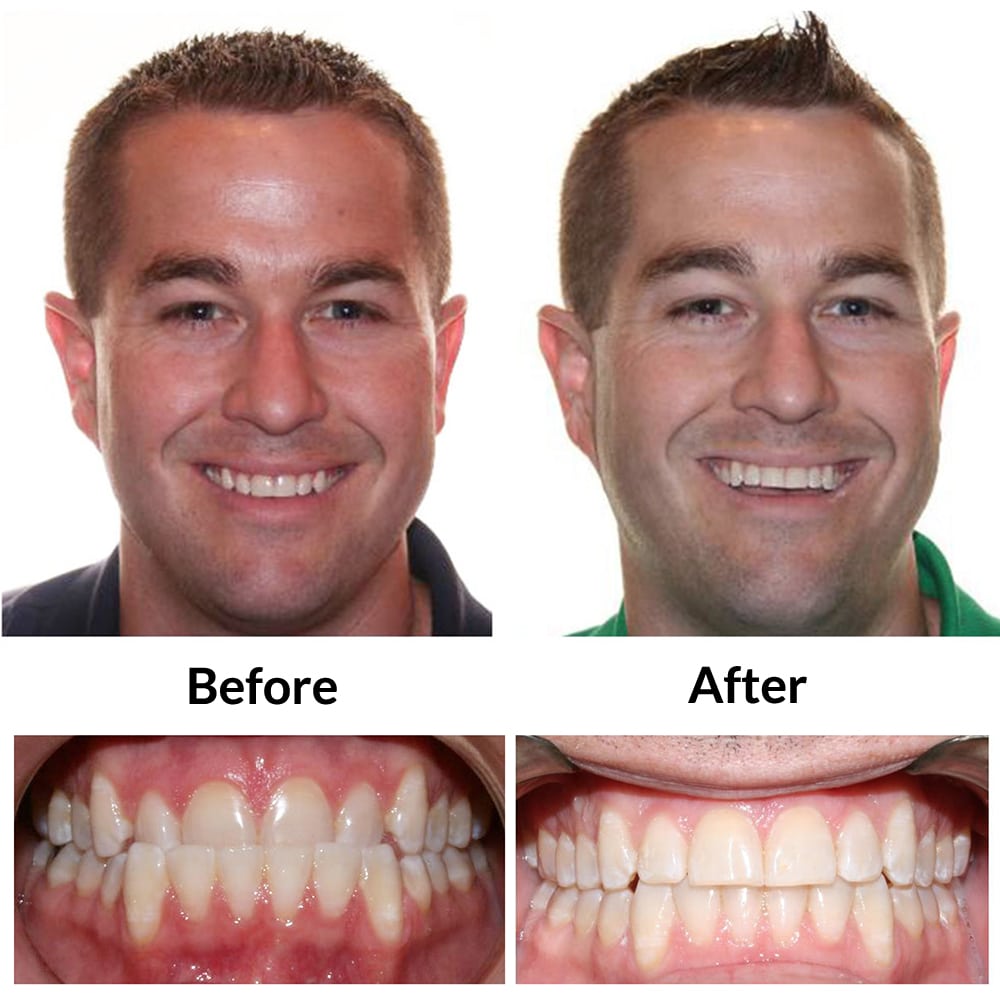Frequently Asked Questions Concerning Invisalign: Everything You Required to Know
Frequently Asked Questions Concerning Invisalign: Everything You Required to Know
Blog Article
Invisalign vs. Conventional Braces: Which Alternative Is Right for You?
When thinking about orthodontic treatment, the choice in between Invisalign and conventional braces presents several essential variables that merit careful assessment. Invisalign offers a discreet option with removable aligners, while standard braces provide an extra visible yet effective remedy for serious imbalance.
Summary of Treatment Options

On the other hand, traditional dental braces contain metal braces and wires that are bound to the teeth. This technique uses continuous pressure gradually to attain alignment. While efficient for intricate orthodontic issues, standard dental braces call for normal visits for adjustments and can present obstacles in maintaining oral hygiene because of the problem of cleaning up around cables and braces.
Both choices have their qualities, and the choice typically pivots on details oral problems, way of life choices, and patient conformity. Ultimately, consulting an orthodontic expert is essential for establishing the most ideal treatment strategy customized to private requirements. Comprehending the nuances of each choice can significantly influence the total success of orthodontic treatment.
Visual Considerations
A significant aspect affecting the option between Invisalign and conventional braces is the visual charm each therapy offers. Invisalign aligners are crafted from clear plastic, making them essentially invisible when worn. This discreet appearance is specifically attracting adults and teenagers that may feel awkward regarding their orthodontic treatment. The capacity to preserve a natural smile throughout the placement procedure can substantially improve the patient's self-confidence in expert and social setups.
On the other hand, standard braces consist of steel brackets and cables, which can be extra visible. While innovations in orthodontic technology have brought about the development of smaller braces and tinted elastics, conventional dental braces still keep a more obvious profile. For some individuals, the presence of braces might hinder them from seeking needed treatment.
Ultimately, the option in between Invisalign and traditional braces might depend upon individual preferences pertaining to visual appeals. People who focus on discretion usually favor Invisalign, while those that are less worried concerning presence might opt for conventional braces. Recognizing the visual ramifications of each alternative is important for making a notified decision that aligns with one's way of living and choices.
Comfort and Convenience

In terms of ease, Invisalign aligners are detachable, allowing individuals to appreciate their favorite foods without constraint and preserve optimal oral hygiene. Brushing and flossing are streamlined, as the aligners can be gotten throughout these routines, whereas typical dental braces call for mindful navigating around wires and brackets.
In contrast, conventional dental braces necessitate normal adjustments, making them less practical for those with active routines. Overall, the comfort and benefit of Invisalign make it an enticing selection for lots of people seeking orthodontic treatment.
Treatment Period and Effectiveness
While both Invisalign and typical braces work in fixing oral misalignments, the period of treatment can vary significantly in between the 2 alternatives. Normally, Invisalign treatment can take anywhere from 12 to 18 months, depending on the complexity of the situation. The clear aligners function by gradually changing teeth right into their wanted positions, and normal follow-ups with an orthodontist help make sure progress remains on the right track.
On the other hand, typical braces often require a longer dedication, generally varying from 18 months to three years. This is due to their set nature and the use of braces and cables, which can visit our website be more efficient for extreme imbalances and complex situations (Invisalign). The therapy performance of typical braces is well-documented, as they enable precise changes and better control over tooth motion
Eventually, the selection between Invisalign and typical dental braces might depend upon both the anticipated therapy duration and the details oral issues handy. Consulting with an orthodontist is vital, as they can give customized recommendations based on private needs, making certain the picked method lines up with preferred results and durations.
Expense Contrast and Insurance Policy Choices
Price plays a considerable role in the decision-making procedure for people taking into consideration orthodontic treatment, whether deciding for Invisalign or traditional braces. On average, the cost of Invisalign arrays from $3,000 to $8,000, while traditional braces normally set important source you back in between $2,000 and $6,000. Elements influencing these expenses include the complexity of the situation, the period of treatment, and geographical location.
Many oral insurance policy strategies offer partial insurance coverage for orthodontic therapies, however the specifics can vary extensively. Generally, traditional braces may be a lot more frequently covered by insurance plans contrasted to Invisalign, which some insurance companies classify as an aesthetic procedure.
In addition, numerous orthodontic techniques supply adaptable layaway plan, making both therapy alternatives much more available. Individuals must ask regarding possible financing alternatives and price cuts for in advance payments. Reviewing the total cost, including insurance policy benefits and layaway plan, is necessary for making an informed decision that lines up with both visual preferences and spending plan factors to consider.

Final Thought
In recap, the choice between Invisalign and standard dental braces rests on numerous aspects, including aesthetic choices, comfort, treatment duration, and more expense. Invisalign supplies a discreet, removable choice that facilitates oral health and nutritional flexibility, while standard dental braces might be preferable for complicated dental issues and frequently come with a lower price factor. Inevitably, assessment with an orthodontist is vital to examine specific circumstances and determine one of the most proper therapy alternative for attaining ideal dental positioning.
When taking into consideration orthodontic therapy, the selection in between Invisalign and standard braces provides several essential elements that warrant cautious assessment.Comparing Invisalign and conventional dental braces exposes distinctive therapy alternatives for orthodontic modification.While both Invisalign and conventional dental braces are efficient in remedying oral misalignments, the period of therapy can vary considerably between the two alternatives.Expense plays a considerable function in the decision-making process for people considering orthodontic treatment, whether deciding for Invisalign or typical braces.In summary, the option between Invisalign and typical braces hinges on several elements, consisting of visual choices, convenience, treatment period, and cost.
Report this page